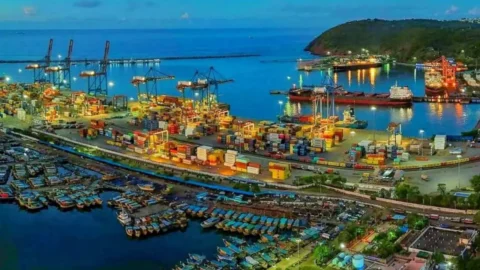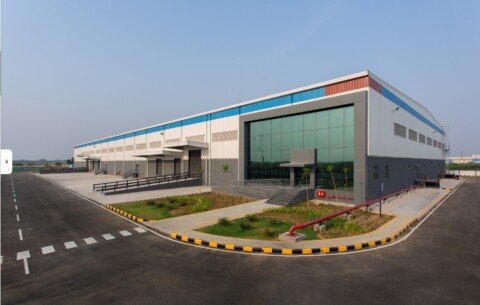After the Union Budget 2021, what came to the limelight is that the government has extended its Rs 111-lakh-crore ($1.5 trillion) National Infrastructure Pipeline to cover more projects by 2025 in an effort to shore up economic growth as the nation recovers from the pandemic-induced recession.
“The National Infrastructure Pipeline, which was launched with 6,835 projects, has now expanded to 7,400 projects. Around 217 projects worth Rs 1.10 lakh crore under some key infrastructure ministries have been completed,” Finance Minister Nirmala Sitharaman had said in her Budget 2021 speech on February 01, 2021.
The programme will require an increase in funding from the government as well as the financial sector, she said.
For this, the government is proposing to take three concrete steps:
- Creating institutional structure
- Big thrust on monetisation of assets
- Enhancing share of capital expenditure in central and state budget
Building new roads, rail links and other social and economic infrastructure is the key for attracting investments and making India a $5-trillion economy, FM Sitharam noted.
The NIP—jointly funded by the central government (39%), state government (40%) and the private sector (21%)—aims to invest in projects spanning across sectors such as energy, social and commercial infrastructure, communication, water and sanitation.
Besides, the government will set up a new development finance institution called the National Bank for Financing Infrastructure and Development. “This will be set up on a capital base of Rs 20,000 crore and will have a lending target of Rs 5 lakh crore in three years,” the FM said.
“Infrastructure needs long-term debt financing. A professionally managed development financial institution is necessary to act as provider, enabler and catalyst for infrastructure financing,” Sitharaman added.
Other key announcements:
- A national monetisation pipeline of potential brownfield infrastructure assets will be launched.
- An asset monetisation dashboard will be created for tracking the progress and to provide visibility to investors.
- National Highways Authority of India (NHAI) and Power Grid Corporation of India (PGCIL) to set up infrastructure investment trust to attract global funds. Five operational roads with estimated enterprise value of Rs 5,000 crore are being transferred to NHAI InvIT.
- Transmission assets worth Rs 7,000 crore to be transferred to PGCIL InvIT
- A sharp increase in capital expenditure — Rs 5.54 lakh crore for 2021-22, which is 34.5% more than budget estimate of 2020-21.
- To provide more than Rs 2 lakh crore for states and autonomous bodies for their capital expenditure.
Last year, in December, Union Minister Nitin Gadkari said that there are huge investment opportunities for India especially in its vibrant infrastructure sector where projects worth Rs 44 lakh crore are under implementation as part of the National Infrastructure Pipeline (NIP) of Rs 111 lakh crore. The minister was quoted in a media report saying that NIP envisages an investment of Rs 111 lakh crore on infrastructure projects by the year 2024-25. At present, projects worth Rs 44 lakh crore out of the Rs 111 lakh crore, accounting for 40% are under implementation and worth Rs 22 lakh crore projects that account for NIP’s 20% are under development stages.
Under the programme, investments worth Rs 25 lakh crore are envisaged in the energy sector, Rs 16 lakh crore is envisaged in irrigation, rural agriculture and food processing, 20 lakh crore is envisaged in the highways sector, Rs 16 lakh crore each in mobility and railways and an investment of Rs 14 lakh crore is envisaged on digital infra among others, the minister had said.
According to Gadkari, the highways sector has huge potential and in five years the toll income was slated to reach an amount of Rs 1 lakh crore from Rs 34,000 crore this year. He further added that it holds lucrative investment opportunities given 100% FDI permitted in the sector. The government has ensured minimising risk to the private sector through various policy initiatives as well as introduced low risk models such as hybrid annuity model for the sector, Gadkari had mentioned.
For the sector, a target of investments to the tune of an amount of Rs 15 lakh crore has been set for the next 2-3 years, Gadkari had said. The Delhi-Mumbai express corridor, worth Rs 1 lakh crore, spanning a distance of 1,300 km is expected to be completed in the next two years with the project’s 50% already completed. While in the next month, two more expressway projects, worth an amount of Rs 65,000 crore will be launched, he had expressed.
However, a parliamentary panel had recently asked NHAI to prioritise the completion delayed highway projects which amount to Rs 3.15 lakh crore instead of announcing new projects.
Subsequently, the National Highways Authority of India is ramping up the pipeline of projects to be awarded in the first quarter of the next fiscal year, after awarding activity is expected to reach around 4,500 kilometres of highways this financial year.
The authority is likely to bid out projects worth around Rs 50,000 crore in the first quarter starting April. The process to award projects has gained momentum in past few months, after the COVID-induced slowdown last year.







